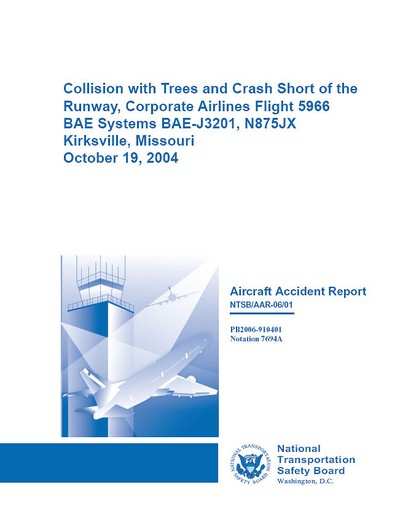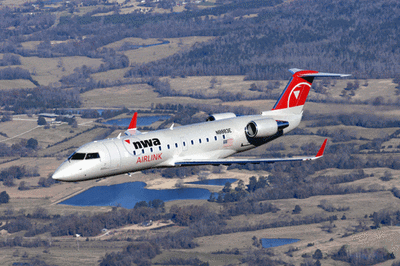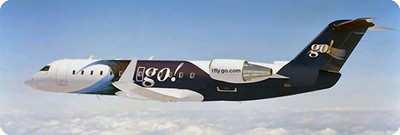Safety Board Wants Measures To Keep Cockpit Crews Awake
 The National
Transportation Safety Board made two recommendations Tuesday to the
Federal Aviation Administration (FAA) to address human fatigue
within airline operations. The Board recommended that the FAA
develop guidance, based on empirical and scientific evidence, for
operators to establish fatigue management systems, including
information about the content and implementation of these
systems.
The National
Transportation Safety Board made two recommendations Tuesday to the
Federal Aviation Administration (FAA) to address human fatigue
within airline operations. The Board recommended that the FAA
develop guidance, based on empirical and scientific evidence, for
operators to establish fatigue management systems, including
information about the content and implementation of these
systems.
The Board also made a recommendation to develop and use
methodology that will continually assess the effectiveness of
fatigue management systems implemented by operators, including
their ability to improve sleep and alertness, mitigate performance
errors, and prevent incidents and accidents.
"The Safety Board is extremely concerned about the risk and the
unnecessary danger that is caused by fatigue in aviation," said
NTSB Chairman Mark V. Rosenker."We have seen too many accidents and
incidents where human fatigue is a cause or contributing
factor."
The Board's recommendations letter cites three accidents and an
incident highlighting the danger of human fatigue within airline
operations:
- On October 19, 2004, Kirksville, MO, Corporate Airlines flight
5966 struck several trees on its final approach and crashed short
of the airport. Both pilots and 11 passengers were killed. Two
passengers received serious injuries.

- On February 18, 2007, Delta Connection flight 6488, operated by
Shuttle America, Inc., overran the end of the runway as it was
landing at Cleveland-Hopkins International Airport. All 72
passengers and a crew of four deplaned without serious injury.
- On April 12, 2007, Pinnacle Airlines flight 4712 ran off the
runway after landing at Cherry Capital Airport (TVC), Traverse
City, MI. None of the 49 passengers or crew of three were
injured.

- On February 13, 2008, Go! flight 1002, operated by Mesa
Airlines, flew past its destination airport, General Lyman Field,
Hilo, HI. Air traffic control repeatedly attempted to contact the
crew for over 18 minutes, as it flew over Maui, crossed the big
island of Hawaii and headed southeast over the Pacific Ocean. The
airplane traveled 26 nautical miles beyond its intended destination
airport before the flight crew responded. There were no
injuries.

"It is imperative that the FAA take action to reduce human
fatigue in airline operations," Rosenker said. "Addressing this
safety related measure is long overdue. We must and can correct
this serious concern."
In the case of the Pinnacle accident, the NTSB determined the
CRJ-200's flight crew elected to land on a snow-packed runway
without performing the required landing distance calculations -- a
serious lapse in judgment, due at least in part to crew
fatigue.
"Also contributing to the accident were the Federal Aviation
Administration pilot flight and duty time regulations that
permitted the pilots' long, demanding duty day; and the TVC
operations supervisor's use of ambiguous and unspecific radio
phraseology in providing runway braking information," the Board
noted.
The NTSB findings -- which came following a public meeting
Tuesday on the above-cited incidents -- also confirmed what many
had suspected in the case of go! Airlines Flight 1002: that the
two-man flight crew fell asleep in the short inter-island flight.
"[B]both pilots unintentionally fell asleep during cruise flight,"
NTSB member Jena Price said during the presentation, according to
the Associated Press.
The NTSB revealed the captain of the flight suffered from severe
sleep apnea, according to KITV-4 in Honolulu.
 ANN's Daily Aero-Linx (04.16.24)
ANN's Daily Aero-Linx (04.16.24) Aero-News: Quote of the Day (04.16.24)
Aero-News: Quote of the Day (04.16.24) Airborne 04.10.24: SnF24!, A50 Heritage Reveal, HeliCycle!, Montaer MC-01
Airborne 04.10.24: SnF24!, A50 Heritage Reveal, HeliCycle!, Montaer MC-01 Airborne 04.12.24: SnF24!, G100UL Is Here, Holy Micro, Plane Tags
Airborne 04.12.24: SnF24!, G100UL Is Here, Holy Micro, Plane Tags Airborne-Flight Training 04.17.24: Feds Need Controllers, Spirit Delay, Redbird
Airborne-Flight Training 04.17.24: Feds Need Controllers, Spirit Delay, Redbird






